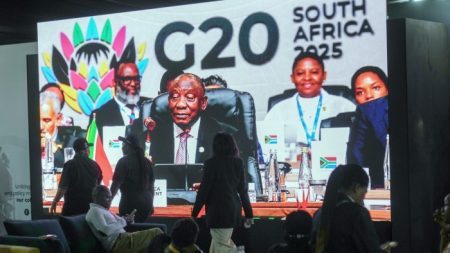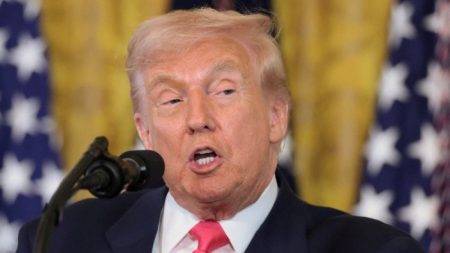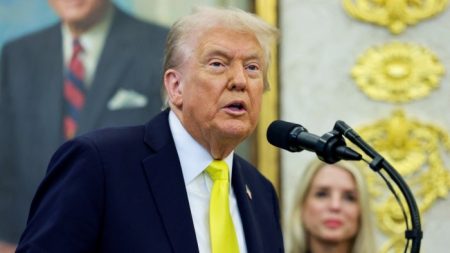Unlock the Editor’s Digest for free
Roula Khalaf, Editor of the FT, selects her favourite stories in this weekly newsletter.
Advanced economies’ central banks expect gold’s share of global reserves to rise at the expense of the US dollar, as these institutions look to follow the lead of emerging markets in buying bullion.
Almost 60 per cent of rich countries’ central banks believe that gold’s share of global reserves will rise in the next five years, up from 38 per cent of respondents last year, according to an annual survey conducted by the World Gold Council, an industry promotion group.
Around 13 per cent of advanced economies plan to increase their gold holdings in the next year, up from around 8 per cent last year and the highest level since the survey began. That follows the lead of emerging market central banks, which have been the main purchasers of gold since the 2008 global financial crisis.
Meanwhile, a rising proportion of advanced economies — 56 per cent, up from 46 per cent last year — also think the dollar’s share of global reserves will fall over the next 5 years. Among emerging market central banks, 64 per cent share this view.
The demand for gold, which comes despite a sharp rise in the price of the yellow metal this year, highlights how allocations to the dollar have been declining as central banks have sought to diversify their holdings through alternative currencies and assets, especially after the US weaponised its currency in sanctions against Russia.
“This year we’ve seen much stronger convergence. More advanced countries are saying that gold is going to occupy more of global reserves and the dollar will be less,” said Shaokai Fan, global head of central banks at the WGC.
“It wasn’t the emerging market countries evaluating these factors less but advanced markets catching up to how emerging markets feel about gold,” he added.
The survey — one of the few insights into the thinking of publicity-shy reserve managers — found that a record share of central banks since the survey began five years ago intend to increase their gold reserves over the next 12 months, at 29 per cent of respondents. Of the emerging market respondents, nearly 40 per cent plan to raise their holding.
The main reasons cited by central banks for holding gold are its long-term value, performance during a crisis and its role as an effective diversifier.
Central banks added more than 1,000 tonnes of gold to their reserves in both 2022 and 2023, according to the WGC. US sanctions on Russia’s dollar-denominated assets prompted a rush among non-western official financial institutions for bullion — the value of which does not rely on any government or bank, unlike fiat currencies.
The consecutive years of record buying, the pace of which has continued into this year, has been a driving factor behind gold’s rally to nearly $1,450 per troy ounce last month. It is up 42 per cent since the Israel-Hamas conflict began in October.
The dollar’s share of global foreign exchange reserves — excluding gold — has plummeted from more than 70 per cent in 2000 to around 55 per cent last year, stripping out the effect of US dollar appreciation, according to research from the IMF this month. Including gold, the dollar’s share has dropped below half, the WGC says.
Although the Chinese renminbi has made some gains as a reserve currency, the uncertainty hanging over the country’s economy has meant that the percentage of central banks expecting it to increase its share of global reserves fell from 79 per cent last year to 59 per cent this year.
Read the full article here














